Securing the perimeter of your property is essential for safeguarding your home and ensuring the safety of your family and belongings.
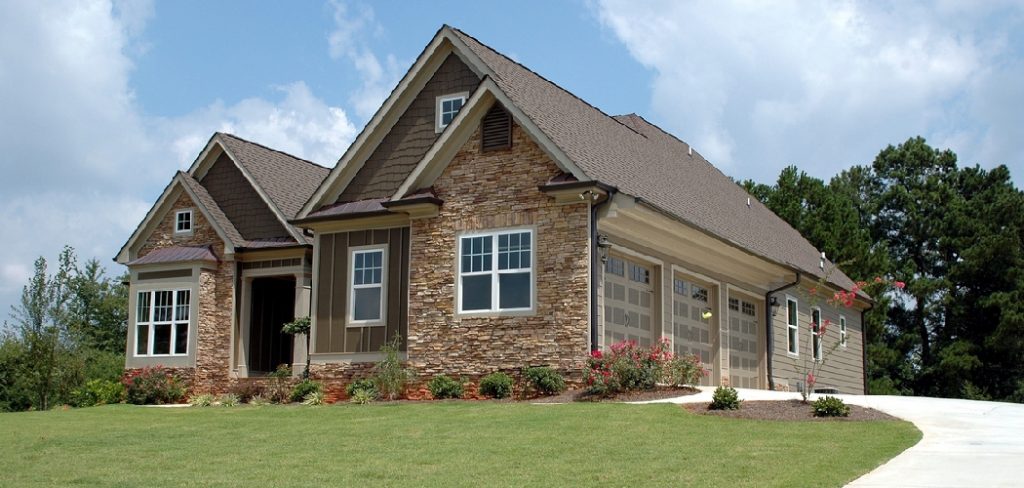
Whether you live in a suburban neighborhood or a rural area, taking steps to secure your property’s boundaries can deter intruders and provide peace of mind.
From installing fences and gates to implementing advanced security systems and landscaping techniques, there are various methods to fortify the perimeter of your property against potential threats.
In this article, we’ll explore practical strategies and tips for how to secure the perimeter of your property, including assessing vulnerabilities, selecting appropriate security measures, and maintaining a vigilant approach to surveillance and maintenance.
By prioritizing security measures tailored to your property’s unique layout and needs, you can create a fortified perimeter that enhances the safety and security of your home and loved ones.
Importance of Securing the Perimeter
Securing the perimeter of your property is not just about protecting physical assets; it’s a comprehensive approach to ensure the overall safety and privacy of your residential environment. The perimeter acts as the first line of defense against unauthorized access, burglaries, and vandalism.
By creating a secure boundary, you achieve multiple objectives including deterring potential intruders through physical barriers and psychological deterrents, defining clear boundaries to prevent accidental trespassing, and enhancing privacy for you and your family.
Furthermore, a well-secured perimeter can significantly contribute to the overall value and appeal of your property. It demonstrates a commitment to safety, which can be reassuring to neighbors and desirable to future homebuyers.
In essence, taking steps to secure the perimeter is a crucial investment in preserving the sanctity and security of your home environment.
Benefits of Perimeter Security Measures
Perimeter security measures offer a multitude of benefits that extend beyond the immediate protection of your property. First and foremost, they provide a powerful deterrent to potential intruders.
The presence of visible security features such as high fences, security cameras, and motion sensor lighting can make your property less attractive to burglars and vandals, thereby reducing the likelihood of break-ins.
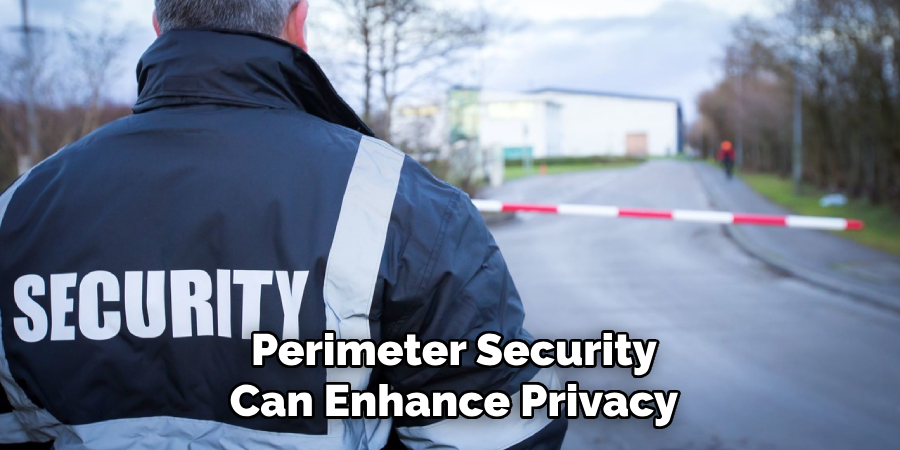
Additionally, perimeter security can significantly enhance privacy, creating a secluded sanctuary for you and your family to enjoy.
It limits the view of your property from the outside, making your private life truly private. On a practical level, implementing robust perimeter security measures can lead to financial benefits.
By decreasing the risk of theft and property damage, you potentially lower your home insurance premiums. Insurers often recognize the reduced risk profile of well-secured properties and may offer discounts on insurance rates.
Furthermore, perimeter security contributes to a heightened sense of safety and peace of mind for residents.
Knowing that you have taken proactive steps to secure your home can make you feel more comfortable and secure, particularly during the night or when the property is unoccupied. This psychological benefit is invaluable, as it directly impacts your quality of life and well-being.
Finally, a secure perimeter can enhance community safety and cohesion. When residents take pride in the security and appearance of their properties, it encourages a more vigilant and interconnected community.
This collective effort can deter criminal activity in the area and promote a safer environment for everyone.
In summary, the implementation of perimeter security measures provides comprehensive benefits that safeguard the property, enhance privacy, offer potential financial savings, and contribute to a safer community.
Understanding Perimeter Security Risks
Before implementing measures to secure the perimeter of your property, it’s critical to understand the various security risks that could compromise its safety. A clear comprehension of potential vulnerabilities can guide the selection of the most effective security strategies tailored to your property’s specific needs.
Common risks to perimeter security include unauthorized entry, which can occur through climbing over, digging under, or bypassing barriers without detection. Intruders may exploit weak points in fencing, take advantage of poorly lit areas, or use sophisticated methods to disable electronic security systems.
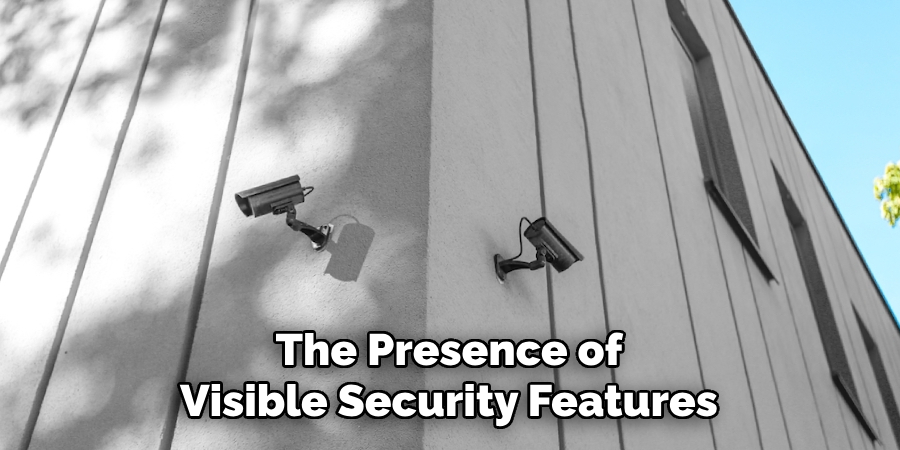
Additionally, visual obstructions caused by overgrown vegetation or poorly placed structures can provide cover for unauthorized activities, further increasing the risk of intrusion.
Environmental factors such as severe weather can also pose risks to your perimeter security by damaging physical barriers, thereby creating opportunities for breaches. Similarly, technological risks, including hacking or signal jamming of electronic security systems, present modern challenges that need to be anticipated and mitigated.
To address these risks effectively, a thorough risk assessment should be conducted to identify and evaluate potential threats unique to your property.
This assessment will inform the design and implementation of a comprehensive perimeter security plan that not only addresses current vulnerabilities but also remains adaptive to evolving security challenges.
Common Security Vulnerabilities in Property Perimeters
Identifying the common vulnerabilities in property perimeters is essential for devising a robust security plan.
One of the most prevalent issues is inadequate fencing or barriers that are too low, weak, or lack the necessary durability to withstand tampering or environmental factors. Such fences offer minimal resistance to intruders and can be easily breached.
Another vulnerability is insufficient lighting, which creates shadows and dark areas where intruders can hide undetected.
Proper lighting acts as both a deterrent and a means of detection, illuminating potential entry points and reducing the likelihood of unauthorized access during nighttime hours.
Unsecured entry points, including gates and other access controls, are also significant vulnerabilities. Gates left unlocked or those that can be easily forced open provide a straightforward entry for potential intruders. Similarly, properties without access control systems or with outdated technology can become easy targets.
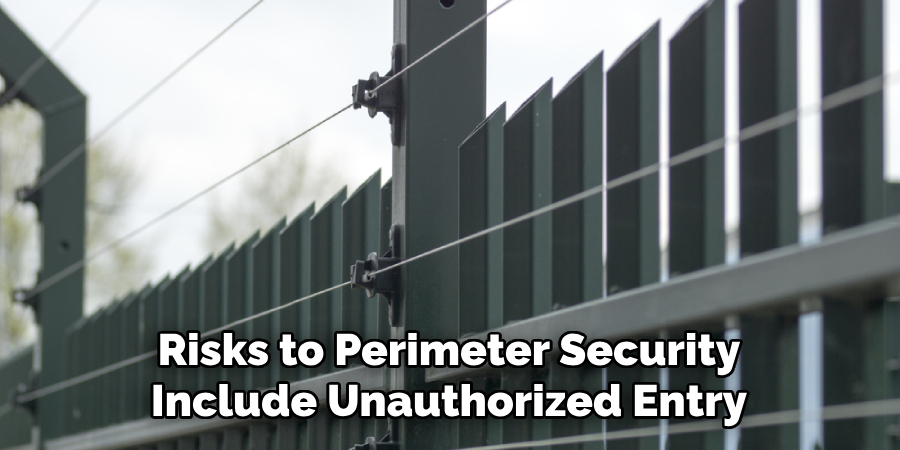
Visual obstructions due to landscaping or stored materials can provide cover for intruders, allowing them to approach and manipulate perimeter defenses without being seen. It’s important to ensure that sight lines are clear and that potential hiding spots are minimized.
Lastly, a lack of surveillance equipment or outdated security technology can fail to detect or deter intruders. Modern surveillance systems and alarms are crucial for real-time detection and response to security breaches. Without them, properties remain vulnerable to intrusion and other security risks.
By addressing these vulnerabilities through strategic security enhancements, property owners can significantly improve the security of their perimeter and, by extension, the safety of their property and its inhabitants.
Risks Posed by Unauthorized Access and Intruders
The psychological impact of a security breach should not be underestimated; victims often experience increased anxiety, fear of future incidents, and a sense of vulnerability within their own homes.
Furthermore, unauthorized access can compromise personal information if intruders gain access to documents or digital devices containing sensitive data.
This can lead to identity theft and financial fraud, exacerbating the consequences of the intrusion.
In addition to these direct risks, the presence of unauthorized individuals can also lead to increased insurance premiums as a result of the heightened risk profile, adding a financial burden to the property owners.
It is essential, therefore, that perimeter security measures are robustly implemented and continuously reviewed to mitigate these risks effectively.
10 Methods How to Secure the Perimeter of Your Property
1.Install a Fence or Wall:
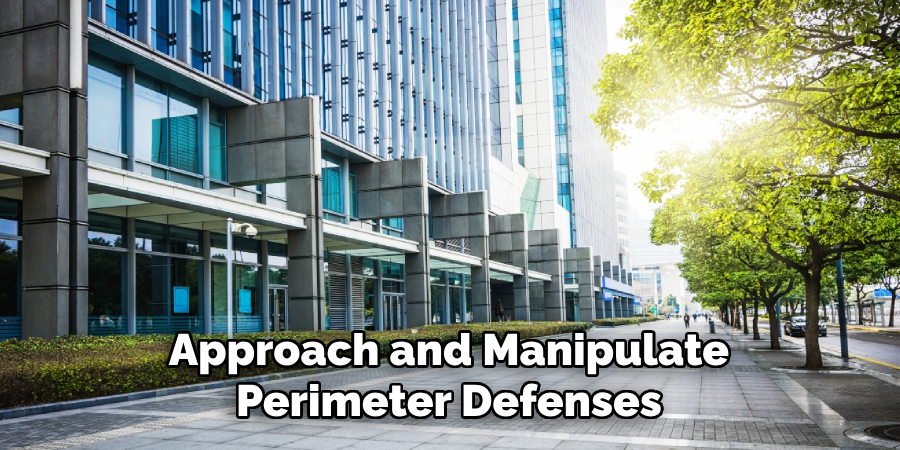
Unauthorized access and intruders pose significant risks to the safety and security of properties. When intruders breach the perimeter, they can cause physical damage to the property, theft of valuable items, and, most alarmingly, put the safety of the inhabitants at risk.
Erecting a fence or wall around the perimeter of your property is one of the most effective ways to establish a physical barrier and prevent unauthorized access. Choose a sturdy material such as wood, metal, or concrete, and ensure the fence or wall is tall enough to deter intruders.
2.Add Security Gates:
Installing security gates at entry points to your property adds an extra layer of protection. Choose gates with secure locking mechanisms and consider options such as automatic gates with keypads or remote access control for added convenience and security.
3.Use Motion-Activated Lighting:
Illuminate the perimeter of your property with motion-activated lighting to deter intruders and improve visibility at night. Place lights strategically along pathways, entry points, and blind spots, and opt for energy-efficient LED fixtures for cost-effective security.
4.Implement Surveillance Cameras:
Install surveillance cameras around the perimeter of your property to monitor activity and deter potential intruders. Choose cameras with high-definition resolution, night vision capabilities, and remote viewing options for optimal security monitoring.
5.Trim Overgrown Vegetation:
Keep vegetation such as bushes, shrubs, and trees trimmed and well-maintained to eliminate hiding spots for intruders and maintain clear lines of sight along the perimeter of your property. Regular pruning also helps prevent vegetation from becoming a fire hazard or obstructing security features.
6.Secure Access Points:
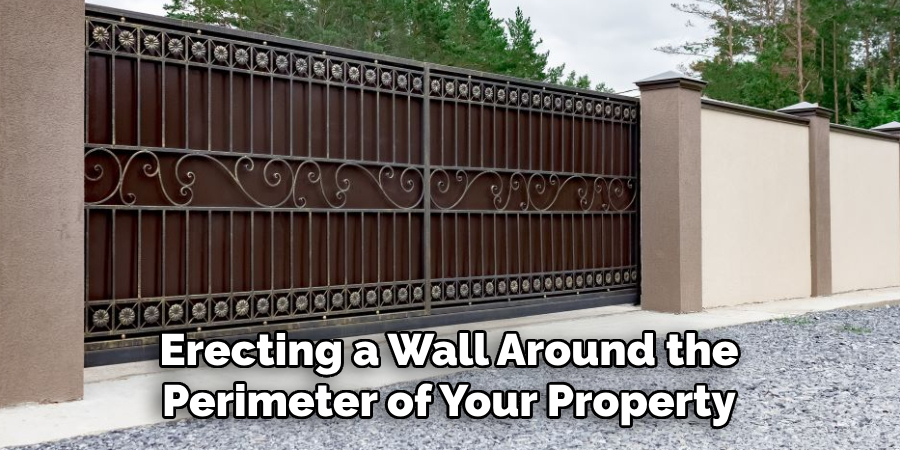
Secure access points such as doors, windows, and gates with sturdy locks and reinforced hardware to prevent unauthorized entry. Consider installing deadbolts, window bars, and security screens for added protection against forced entry attempts.
7.Utilize Natural Barriers:
Take advantage of natural barriers such as hills, slopes, and bodies of water to enhance perimeter security. Incorporate landscaping features such as boulders, berms, or thorny bushes to create additional obstacles and deter intruders from accessing your property.
8.Establish Neighborhood Watch Programs:
Collaborate with neighbors to establish neighborhood watch programs and foster a sense of community vigilance. Organize regular meetings, share information about suspicious activity, and work together to monitor and report any security concerns in the area.
9.Invest in Alarm Systems:
Install alarm systems with sensors and detectors at key points around the perimeter of your property to detect unauthorized entry attempts and alert you to potential security breaches. Choose systems with audible alarms and remote monitoring capabilities for maximum effectiveness.
10.Implement Access Control Measures:
Implement access control measures such as keypads, key cards, or biometric systems to regulate entry and exit points on your property.
Control access to gates, doors, and other entryways, and consider integrating access control systems with surveillance cameras for enhanced security monitoring.
Enhancing Perimeter Surveillance
To further strengthen the security measures around the perimeter of your property, integrating advanced surveillance technologies is imperative.
Consider utilizing drones equipped with cameras to periodically survey the property from the air, providing a comprehensive view that is difficult to achieve through ground-based surveillance alone.
Additionally, implementing thermal imaging cameras can significantly enhance surveillance capabilities during nighttime, enabling the detection of intruders based on their heat signatures, even in complete darkness. Another innovative approach is the use of artificial intelligence (AI) with surveillance systems.
AI can analyze video feeds in real-time, recognizing suspicious behaviors or unauthorized access attempts and alerting security personnel automatically.
These enhancements not only bolster the security of your property but also act as a powerful deterrent against potential intruders, ensuring peace of mind for property owners and occupants alike.
Strategically Installing Security Cameras
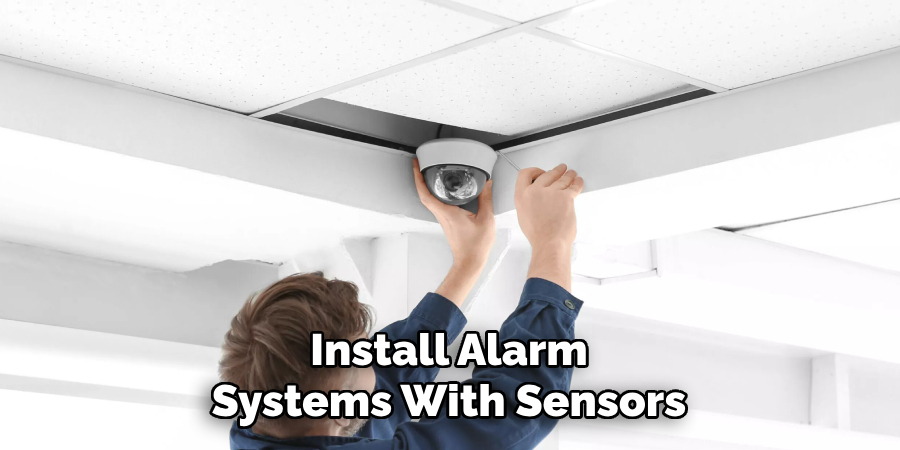
To maximize the effectiveness of security cameras within the perimeter security framework, it is crucial to identify and target strategic points around the property for their installation.
These key locations typically include entry and exit points, such as gates and doors; vulnerable areas like windows or secluded corners that are not easily visible; and common areas where intruders are likely to pass through or attempt to gain entry.
When positioning cameras, ensure they are placed at an elevated angle to provide a broad field of view, reducing blind spots and enhancing the ability to monitor large areas continuously.
Additionally, cameras should be positioned in a way that they are not easily tampered with or obstructed, thus maintaining uninterrupted surveillance. For properties that span a large area, consider utilizing a mix of fixed and pan-tilt-zoom (PTZ) cameras.
Fixed cameras can provide constant coverage of specific points, while PTZ cameras can cover a wider area and zoom in on suspicious activities for detailed monitoring.
Ensuring that your surveillance system includes cameras capable of recording in high definition and in low-light conditions is essential for capturing clear, actionable footage regardless of the time of day or lighting conditions.
Utilizing Motion-Sensing Lights and Alarms to Deter Intruders
Utilizing motion-sensing lights and alarms forms a critical component of a comprehensive perimeter security strategy. These systems work by detecting movement within a defined range, activating lights or sounding alarms to alert property occupants of potential intruders.
The sudden illumination or noise serves not only to startle and deter unauthorized individuals but also to attract attention to their presence, potentially warding off an intrusion attempt before it escalates.
When integrating motion-sensing technology, placement is key; sensors should be strategically positioned around entry points, pathways, and dark corners where intruders might attempt to hide or gain undetected access.
It’s also beneficial to connect motion-sensing lights and alarms to a central security system or mobile notifications, enabling real-time alerts and the ability to respond swiftly to potential security breaches.
This proactive approach enhances the overall safety and security of the property, creating an unwelcoming environment for intruders while ensuring peace of mind for property owners.
Implementing Physical Barriers and Deterrents
In addition to technological and community-based security measures, the incorporation of physical barriers plays a pivotal role in enhancing perimeter security.
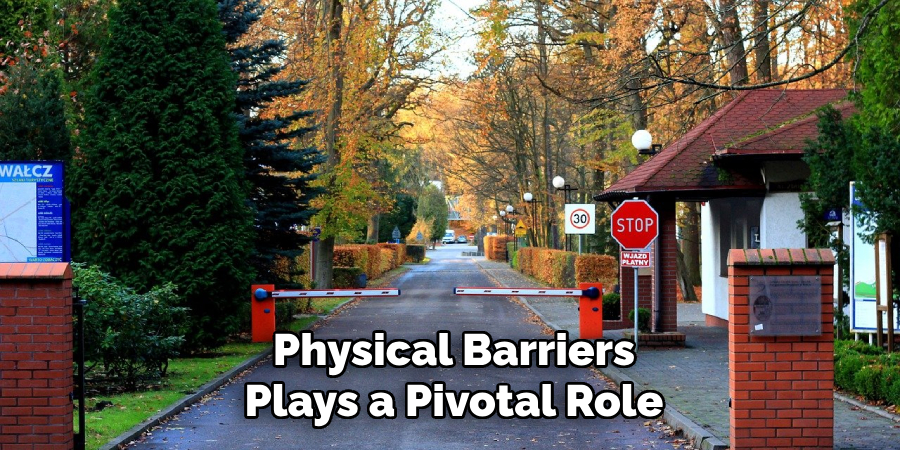
Effective physical deterrents not only prevent unauthorized access but also signal to potential intruders that a property is well-protected, thereby dissuading attempts to breach security.
One of the primary methods of implementing physical barriers is through the construction of fences or walls. These structures should be of a substantial height and constructed with materials that are difficult to climb or breach.
Razor wire, anti-climb spikes, and broken glass toppings can be added to fences and walls to further deter intruders from attempting to scale them.
Gates are another crucial aspect of perimeter security, serving as the controlled entry and exit points of a property. Ensure that gates are constructed of sturdy materials and are equipped with strong locking mechanisms.
Automated gate systems, which can be operated remotely and incorporate security features such as intercoms and cameras, offer an additional layer of security by allowing property owners to verify and control who enters and exits the property.
Beyond fences, walls, and gates, consider the strategic use of bollards and barriers to prevent unauthorized vehicle access to sensitive areas of the property. These can be especially important in commercial or public spaces where the threat of vehicular attacks may be a concern.
Finally, landscaping can serve as both a beautification and security feature. Thorny plants and bushes can be planted beneath windows or along the perimeter to make it more challenging and painful for intruders to approach or hide near the property.
Similarly, strategic placement of rocks and uneven surfaces can create natural barriers that are difficult to navigate quietly.
About
Safety Fic is a distinguished figure in the world of Diy design, with a decade of expertise creating innovative and sustainable Diy solutions. His professional focus lies in merging traditional craftsmanship with modern manufacturing techniques, fostering designs that are both practical and environmentally conscious. As the author of diy, Safety Fic delves into the art and science of Safety Fic-making, inspiring artisans and industry professionals alike.
Education RMIT University
(Melbourne, Australia) Associate Degree in Design (Safety Fic) Focus on sustainable design, industry-driven projects, and practical craftsmanship. Gained hands-on experience with traditional and digital manufacturing tools, such as CAD and CNC software.
Nottingham Trent University
(United Kingdom) Bachelor’s in diyfastly.com and Product Design (Honors) Specialized in product design with a focus on blending creativity with production techniques. Participated in industry projects, working with companies like John Lewis and Vitsoe to gain real-world insights.
Publications and Impact
In diy, Safety Fic his insights on indoor design processes, materials, and strategies for efficient production. His writing bridges the gap between artisan knowledge and modern industry needs, making it a must-read for both budding designers and seasoned professionals.
